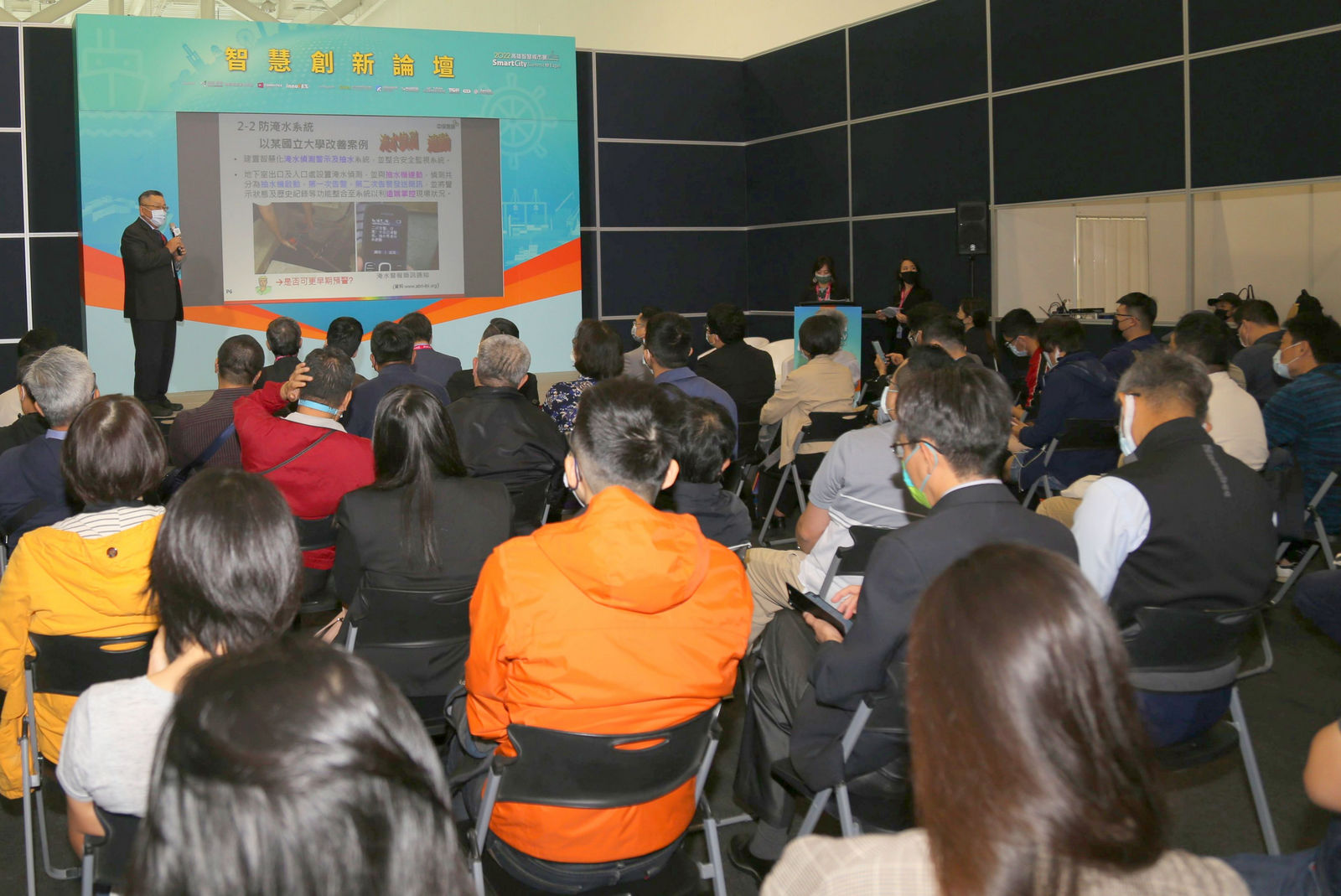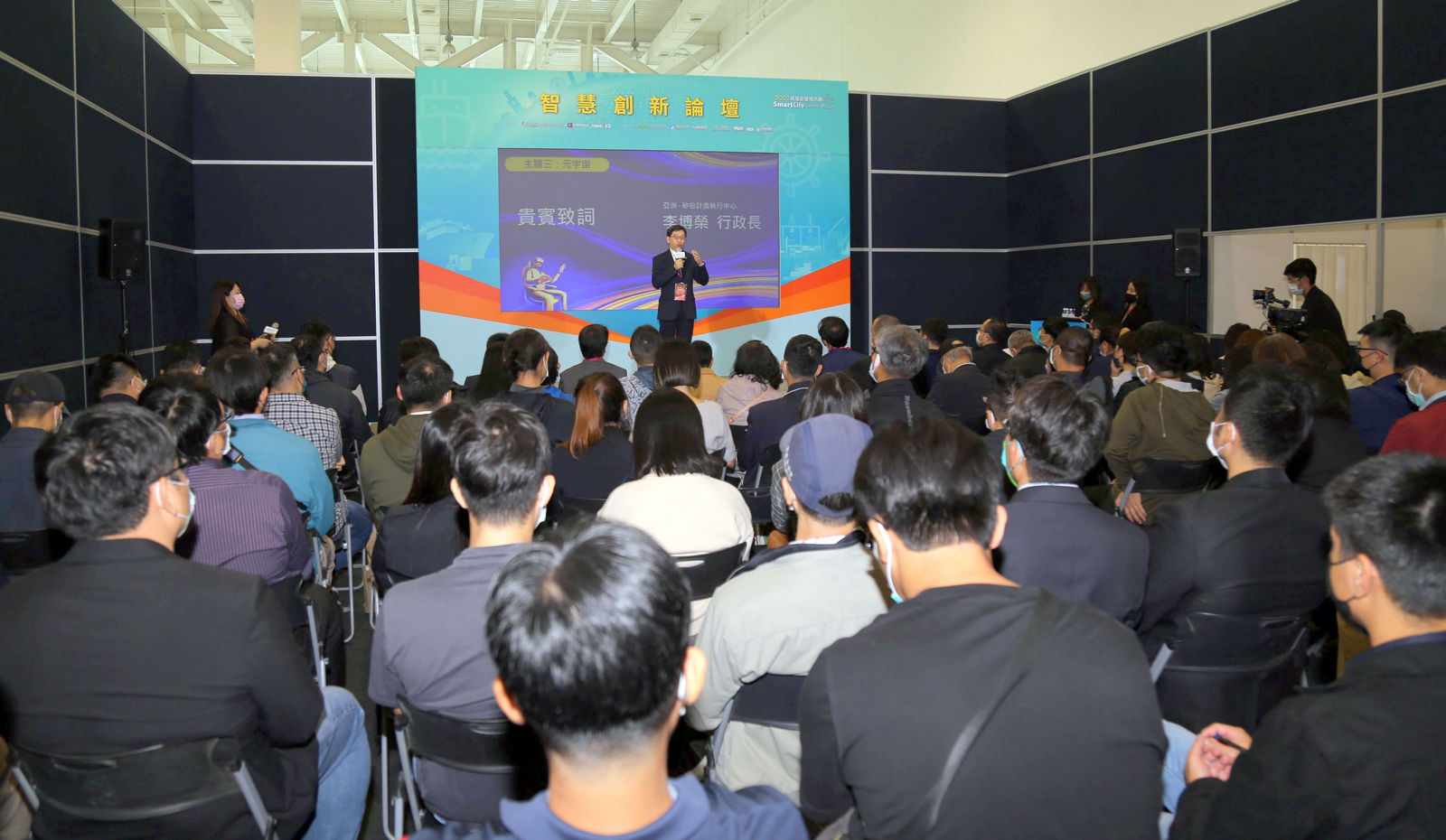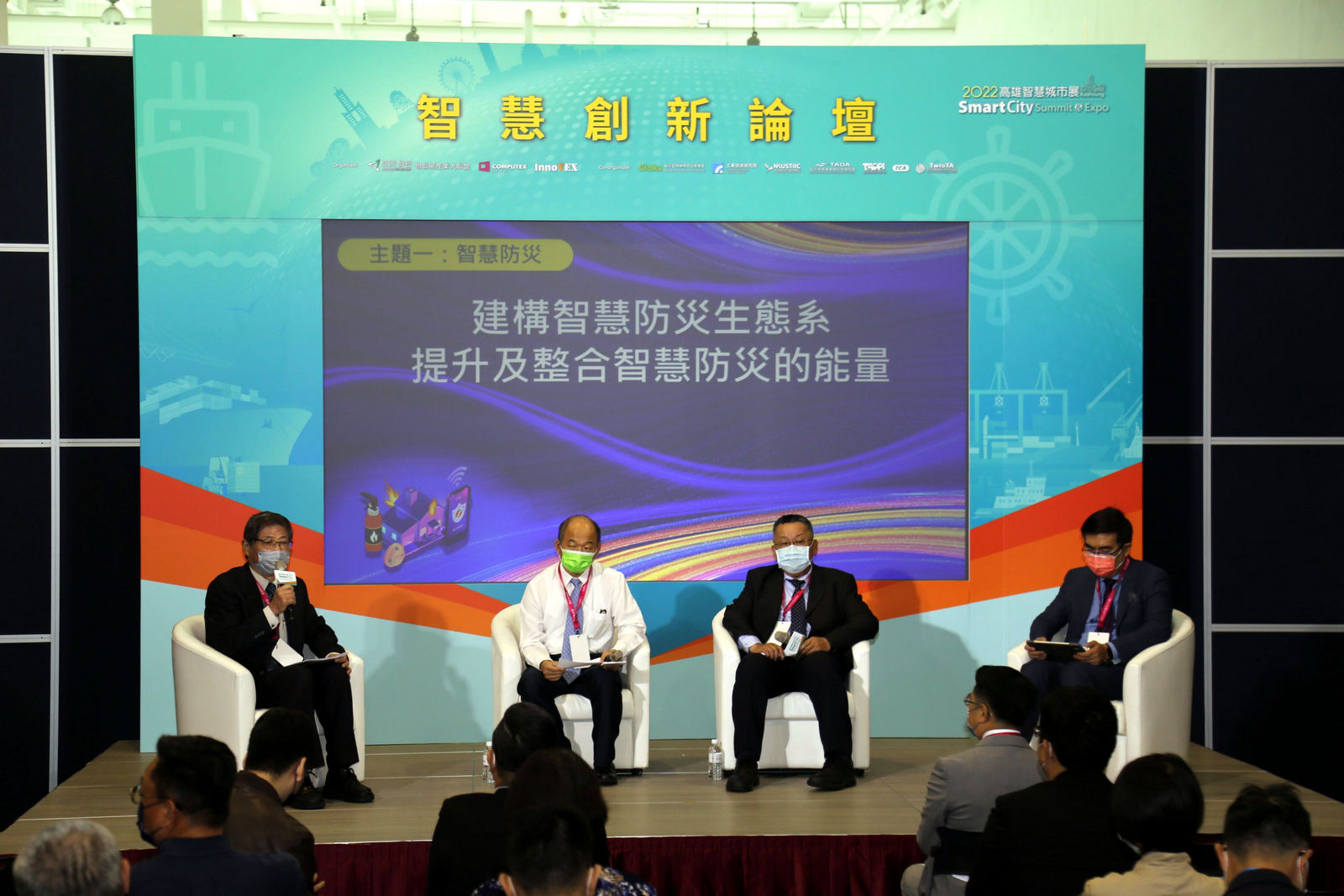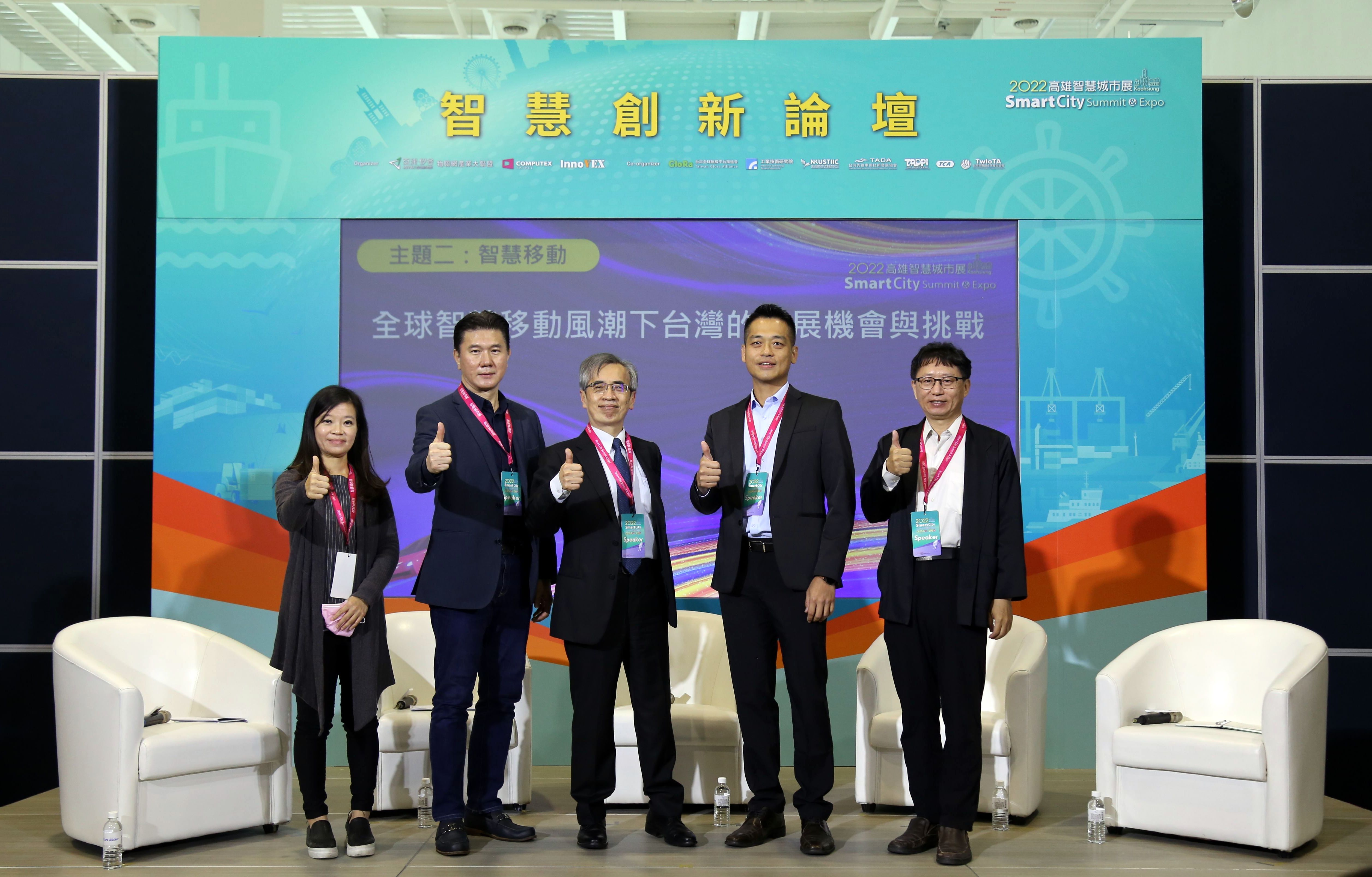
The Kaohsiung Smart City Summit & Expo was held in the Kaohsiung Exhibition Center from March 24 to 26 2022. The 3-day event featured a series of forums; including the Smart Innovation Forum on the first day that focused on industrial digital transformation in Southern Taiwan as well as to inspire innovation and entrepreneurship. The forum was organized by Asia Silicon Valley-Major League IoT, COMPUTEX, and InnoVEX. The forum was also held in partnership with Taiwan GloRa Alliance, Industrial Technology Research Institute (ITRI), National Kaohsiung University of Science and Technology (NKUST) Innovation and Incubation Center, Taiwan Association of Disaster Prevention Industry (TADPI), Taipei Computer Association (TCA), Taiwan IoT Technology and Industry Association (TwIoTA), Taiwan Advanced Automotive Technology Development Association (TADA), and other industrial & academic institutions.
The Smart Innovation Forum focused the industrial innovations as well as new opportunities driven by 5G and AIoT such as the metaverse, smart disaster prevention, and smart mobility. The forum talked about the possible directions for cooperation between the industry, academia, and research groups; especially to develop the practical applications of the metaverse in different fields. In addition, the forum also discussed the future possibility of cross-industry innovation for the younger generation.
IoT and Startups are the Backbones of Metaverse

The CAO of ASVDA, Mr. Paul Lee stated that both IoT and startups are the key foundations for the development of metaverse. Metaverse relies on many IoT related applications and will need new innovations from startups to truly grow. The general sentiment on metaverse is that 2022 will be the first year of metaverse and it also raises questions on the future impact of metaverse. The development of metaverse has also started with the development of Metaverse Seoul whose development was proposed in 2021.
Mr. Lee explained that while there will be many metaverses in the future, each metaverse will focus on specific applications. The goal of future metaverse developments will be to integrate various technologies or contents into a metaverse ecosystem either through cooperation or competition.
Mr. Lee further explained that the metaverse will have 3 stages in the future. The first is the integration of the virtual and actual world, where the real world can be represented in a virtual platform. The second is the software-hardware integration; combining software applications in the metaverse with Taiwan’s strong hardware capabilities to launch better metaverse services. The third is the combination of digital technology with creative content. The metaverse will rely on interesting & engaging content and integrating art with technology is a step that can be done and has been done before. For example, the ASVDA Kaohsiung Software Technology Park can be integrated with facilities such as software parks, e-sports arena, concert halls, etc. to facilitate startup growth in the area. This endeavor will also help the development of smart cities and metaverse applications in Kaohsiung.
5 Gs will be the Core of Metaverse Development
Dr. Lewis Liu, the Division Director of ITRI’s Intelligent Vision System Technology Division stated that industries can consider 2 core strategies to apply metaverse into smart living. They can either aim to solve existing needs from the perspective of metaverse or address new demands through innovative applications of metaverse.
Dr. Yen-Ming Chu, Assistant Professor of NKUST’s Department of Information Management stated that the main focus of metaverse among young entrepreneurs so far seems to focus on 5 Gs; namely: Gaming, Gambling, Girl, Government, and God. He further pointed out that there are many popular innovative services provided by metaverse companies. In fact, many of them were developed or proposed by startups. However, the issues of timing and location often become significant barriers to their successes.
The CEO of Pumpkin Studio, Mr. Peter Liao referenced 2 existing products when discussing the practical business applications of metaverse: Quantaar and Medisim VR. Quantaar is an online VR game released by Pumpkin Studio that offers an avatar function which will allow users to both play and interact online. On the other hand, Medisim VR is Asia’s first advanced VR medical simulation software. With an emphasis on online medical training & education, Medisim VR allows users to communicate with experts as well as students from around the world. In his opinion, the users’ needs are the key and metaverse as a service will be a reality in the future.
In the panel discussion session of the forum, many of the speakers mentioned that the key to the business opportunities in metaverse extends beyond just the hardware, software, and supply chain. Industrial applications, and creative & cultural content will also play an important role in the ecosystem that will have lower entry barriers. As the hardware will be improved in the near future, the software will also gradually mature.
It is also important to note that only the industry players can offer accurate insight on the industrial needs. Suitable metaverse applications might be adopted for industrial purposes only for or sought after by the industries instead of the general consumer. Digital creative & cultural content creation can potentially reach a broader audience without limitations other than the customer preference.
Local Government Strategies Can Improve Disaster Prevention and Reduce Casualties

The world today sees a growth in frequency and intensity of natural disasters that affects citizens as well as governments, businesses, and emergency responders. In his opening speech; Mr. KS Han, Chairman of the Taiwan GloRa Alliance stated that the improved capabilities of GloRa makes it suitable for disaster prevention and other fields.
In his speech, Mr. Yu-Wei Tung, the CEO of K-Best Technology shared how to utilize local wireless technologies such as GloRa or Super TaiRa in various scenarios and settings such as firefighting, mountaineering, industrial safety, offshore applications, and more. Combining the wireless technology with the appropriate devices will allow users to receive disaster prevention and relief information. In turn, this will definitely help reduce casualties and rescue response time in the event of a disaster.
The CTO of Taiwan Secom, Mr. Rong-Guey Lee shared how to utilize AIoT for disaster prevention & mitigation that can be used for earthquake early warning, flood prevention, gas detection, fire protection, as well as disaster prevention efforts in smart societies such as cities, schools, buildings, factory, etc.
Dr. Chi-Ming Peng, Chairman of the Taiwan Association of Disaster Prevention Industry stated that Taiwan has faced many earthquakes in recent days. One such example is the 6.6 Richter Scale earthquake on March 23 with continuous aftershocks. This event prompted people to practice [Drop, Cover, and Hold On] as well as preparing earthquake emergency bags. This trend also renewed attention on the disaster prevention industry.
Taiwan’s location in the Pacific Ring of Fire combined with the ongoing anthropogenic climate change mean the risk of natural disaster as well as its severity will continue to grow. To mitigate this, it might be better to learn from existing success stories such as the focusing on local government and independent disaster prevention as the starting point to develop Taiwan’s disaster prevention industry. This will not only create new business opportunities for related industries; it will also help disaster mitigation efforts.
During the panel discussion, the speakers shared various innovations in disaster prevention strategies. Representing one of the organizers, Dr. Pao-Chung Ho of TCA agreed with the speakers that through the combination of public information and IoT devices; private entities and government units can accelerate the development of smart disaster prevention services. Combining AI, IoT, and 5G will also allow for disaster notifications to be effectively classified according to their degree of urgency. This will also help improve the response time in disaster relief efforts as well as reduce casualties and assist emergency responders in their work.
Electric Vehicles and Smart Mobility Services are Opportunities for Taiwan’s Automotive Supply Chain

Ms. Lucy Ho, Senior Industry Analyst of MIC stated in her speech that the increased demand for energy saving, carbon reduction, and environmental protection have made electric vehicles and smart mobility services even more important than before. The four major trends of CASE (Connected, Autonomous, Shared, and Electric) have also set the direction of industrial and societal transformation. In addition, the ongoing COVID-19 epidemic has also proven the importance of Taiwan’s semiconductor industry in the automotive supply chain.
Mr. Tony An, the AVP of LITE-ON shared LITE-ON’s strategy in the EV and transmission system supply chain. He stated that while traditional automotive companies have the advantage in engine designs, they will still need to rely on Taiwan’s ICT industry for the in-vehicle electronics system. The cooperation of global electronics industry is expected to reach a pivotal point in 2027 when the cost of new EVs is predicted to be lower than the price of internal combustion engine (ICE) vehicles.
Dr. Richard Chen, Senior R&D Manager of AU Optronics in his speech focused more on the market trends, system architecture, as well as users’ needs. He introduced the development and market trends of the multi-screen smart cockpit technology that has become a necessity for both EVs and ICE vehicles. He also shared his insights on the future developments of smart mobility services.
Mr. Jefferson Lin, Director of Advanced Semiconductor Engineering (ASE) shared the full range of ASE’s solutions for EV electronics packaging and testing. The solutions include electronics for high performance computing, testing solutions, comprehensive smart packaging and testing, smart car manufacturing, and more; especially the automotive high-performance computing packaging solutions. Mr. Lin also pointed out that since 2011, ASE has cooperated with a few universities and local companies through the industry-government-academic alliance to improve the overall technology of the packaging and testing industry.
The panel discussion was moderated by Dr. Sam Shen, the Secretary General of TADA who pointed out that the automobile industry has undergone a paradigm shift due to the trend of energy saving and carbon reduction. Many active electronic safety systems were also added to ensure drivers and passengers’ safety. The integration of automotive and ICT industry in terms of culture and strategy has also opened up possibilities for automotive technology products that are applicable for future EV and smart mobility applications which will be relevant for future smart cities as well.
InnoVEX Pitch Contest 2022 Open for Registration
InnoVEX 2022 will be conducted in a hybrid online & offline format. While the InnoVEX ONLINE 2022 will last for the whole year, the offline InnoVEX 2022 onsite will be held in the Taipei Nangang Exhibition Center Hall 1 (TaiNEX 1).
The InnoVEX Pitch Contest has been a mainstay of InnoVEX since it started in 2016. The InnoVEX Pitch Contest registration is open from March 30 to May 2 2022 for both onsite and online exhibitors.
This year, the Pitch Contest will have 11 prizes from InnoVEX 2022 partners and sponsors including 1 Grand Prize and 10 Special Prizes: Startup Terrace Award, Qualcomm Innovation Award, Taiwania Capital Innovation Award, and KPMG Special Award.
The InnoVEX Pitch Contest is open only for the exhibitors of InnoVEX ONLINE 2022 and InnoVEX 2022 onsite. Interested teams can register from the InnoVEX Pitch Contest page.
Sign up now!